Resistor - Symbol, Types, Unit, Color Code, FAQs
Resistor –An electric friction
Let’s understand what is a resistor? And, also analyze its underlying concepts that involve topics like how resistor works and different types of resistors i.e. whether a resistor is fixed or a variable resistor, is it linear or non-linear and so on. We know that there are 3 classifications of materials based on whether they can conduct electricity or not- Conductors, semiconductors and insulators. Conductors can further be good conductors or poor conductors while insulators are the bad conductors. Metals (such as silver, copper, aluminium), salt solutions, acids are good conductors of electricity. This is because a large number of free electrons or ions (in solutions or acids) are present in them.
When an electric potential is applied across two terminals of a conductor, these electrons/ions start moving in a particular direction. But while moving, these electrons/ions collide with molecules/atoms of the conductor, which produce heat. So this property of hindrance or restriction of flow of electrons/ions is called resistance and the substance which is a metal or a salt solution or an acid itself is called a resistor and the resistor symbol looks like a zigzag line. Symbol of resistance is ‘R’ and the unit of resistance in which it is measured is called ‘ohm’.
JEE Main/NEET 2027: Physics Important Formulas for Class 10
NEET 2025: Mock Test Series | Syllabus | High Scoring Topics | PYQs
JEE Main: Study Materials | High Scoring Topics | Preparation Guide
JEE Main: Syllabus | Sample Papers | Mock Tests | PYQs
- Resistor –An electric friction
- How to define resistance?
- Types of resistors
- what does a resistor do?
- Relation between temperature and resistance

A typical resistor looks like this (see fig-1) with these colour bands also called colour codes which tell us about the resistance value along with its tolerance.

(Fig-1)
In the below circuit (see figure 2) a resistor is connected to a battery , a switch and a bulb and with the potential applied, a current flows through the resistor which can be calculated using ohms law (V= IR), where V is the potential applied, R is the resistance of the resistor and I is the current flowing through it.

(Fig-2)
However symbol of a resistor in a circuit is (see fig- 3)
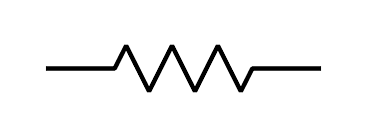
(Fig-3)
Thus in a circuit diagram the above symbol is used for resistors rather than drawing a resistor. They can be in combinations or connected to different circuit elements like capacitors, inductors, switch, ammeter, voltmeter, bulb etc.
There are various types of resistors which we will discuss later in this article along with its purpose in a circuit that is what does a resistor do in a circuit?
Also read -
- NCERT Solutions for Class 11 Physics
- NCERT Solutions for Class 12 Physics
- NCERT Solutions for All Subjects
How to define resistance?
Resistance can be defined as property of a substance due to which it resists/hinders/opposes the flow of electricity/current comprised of electrons/ions through it.
Those substances which offer more resistance are poor conductor of electricity. E.g. - bakelite, mica, dry wood etc. Substances that offer too much resistance are good insulators and hence bad conductors of electricity. E.g.-paper, plastics (except P.V.C which is a poor conductor of electricity), distilled water, etc.
Unit of resistance
Resistance is measured in ohm (Ω). We can define 1 ohm of resistance as – A conductor offers 1 Ω of resistance if it allows 1A of current to flow through it when 1V of potential is applied across its terminals ( by ohms law- (V= IR) => R= V/I ).
For conductors, value of resistance is very small, of the order of 10-3 Ωwhile for insulators, it can be as high as 106Ω.
Concept of resistivity through laws of resistance
There are some factors on which resistance of a conductor depends .These factors are-
Resistance is directly proportional to the length l of that conductor.
It is inversely proportional to the cross sectional area A of that conductor.
It depends on temperature of the conductor.
It depends on type/nature of the material of the conductor.
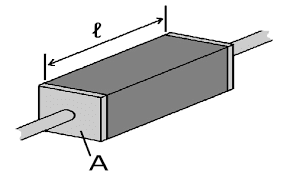
(Fig-4)
Thus from 1st, 2nd and 4rth factors –
R∝l/A => R= ρl/A -eq (1)
Where ρ is a constant called resistivity of a conductor which depends on nature of the material of the conductor, It is also called specific resistance.
Thus by eq (1) we can define resistivity of a conductor as the resistance of a conductor of length 1m and cross section area of 1 m2. Since if l=1m and A=1m2,R=ρ.
Unit of resistivity is Ω-m.
See the table below with values of resistivity of various materials-
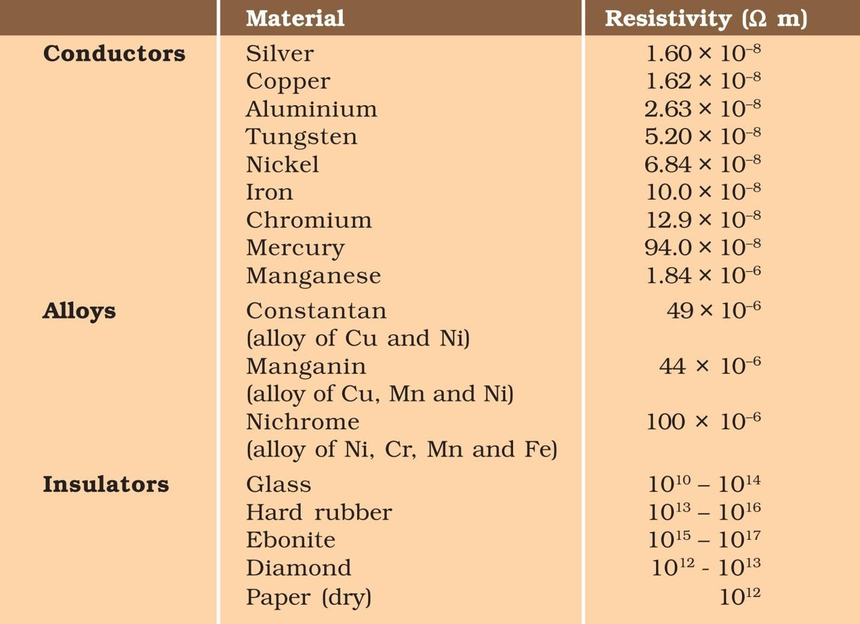
The reciprocal of resistance is called Conductance denoted by G. Thus conductance measures how easily the electrons/ions can pass through the conductor.
 , where σ is the reciprocal of resistivity also called conductivity or specific conductance.
, where σ is the reciprocal of resistivity also called conductivity or specific conductance.
Unit of Conductance is Ω-1 called mho(ʊ) or most commonly Siemens (S) and unit of conductivity is Siemens/meter (S/m).
Related Topics Link, |
Types of resistors
There are mainly 2 types of resistors –Linear resistors and Non-linear resistors. Linear resistors are those resistors whose resistance is constant irrespective of current flowing through it or voltage applied to it. These resistors follow ohms law, the graph of current vs. voltage gives a straight line. However resistance of a nonlinear resistor depends on current and voltage as well as temperature. They do not follow ohms law and the graph of current vs. voltage is not a straight line. Example of a nonlinear resistor is a varistor.
Graph of current vs. voltage in case of linear and non-linear resistors-
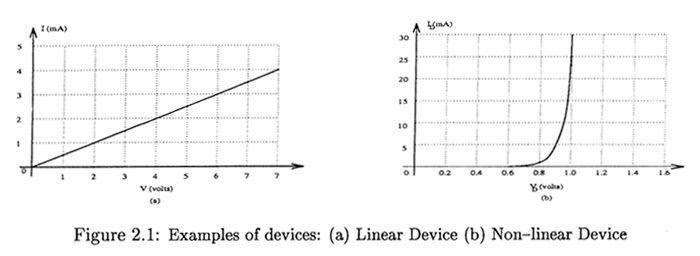
(Fig-5)
In our day to day life, we deal with linear resistors generally. The linear resistors can be further classified into-
Fixed value resistors- These resistors have fixed value and thus we can use a particular value of resistor in a circuit according to our requirement. A typical fixed value resistor looks like this-
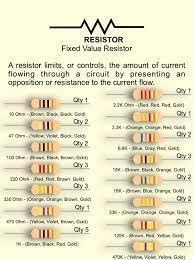
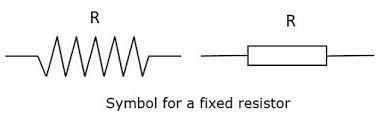
Variable resistors- These types of resistors can change their values or can be adjusted between a range of minimum to maximum values. There are different types of variable resistors but typically these are 3 terminal devices. Potentiometers and rheostats are common variable resistances we use in our labs.
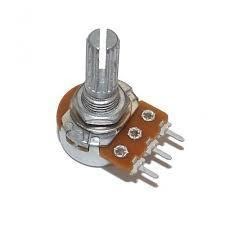
(Fig-6)
Variable resistor symbol is-
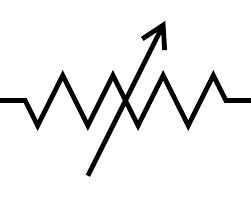
what does a resistor do?
Resistor is a very important component of a circuit. They are mostly used to limit the amount of current flowing in a part of circuit. However role of a resistor in a circuit is not limited to this only. They can be used as potential/voltage dividers, in impedance matching to maximize power transmission at high frequencies, in biasing purposes in transistors, etc.
Effect of temperature on resistance
With increase in temperature-
resistance of pure metals increase.
resistance in alloys increase although this increase is relatively small and irregular compared to pure metals. In some high resistance alloys like manganin , this increase is negligible for a range of temperature.
resistance in insulators (like glass, mica, rubber) and electrolytes decrease.
Also Read:
- NCERT solutions for Class 12 Physics Chapter 3 Current Electricity
- NCERT Exemplar Class 12 Physics Solutions Chapter 3 Current Electricity
- NCERT notes Class 12 Physics Chapter 3 Current Electricity
Relation between temperature and resistance
Let metallic conductor have resistance R0 at 0 ̊C. If we heat it to t ̊C, let its resistance be Rt. Then in normal ranges of temperature, the increase in resistance that is ΔR=Rt-R0 depends on initial resistance and rise in temperature directly.
Therefore, ΔR∝R0 × t
Rt-R0 = αR0t - eq (2)
Rt=R0(1+ αt) -eq (3)
α= (Rt-R0)/R0t , where is called the temperature coefficient of resistance
Thus we can define temperature coefficient of resistance as the increase in resistance per unit original resistance per degree Celsius/Kelvin rise in temperature.
If in Kelvin, then Rt=R0( 1-α)(T-T0)
If in Celsius, then Rt=R0(1+ αt)
Similarly if l/A is divided both sides in the equation (3), we get-
l=100m, A=0.1mm2, ρ=5×10-8Ω-m
ρt=ρ0(1+ αt) -eq(4)
The graph below shows change in resistance with temperature-
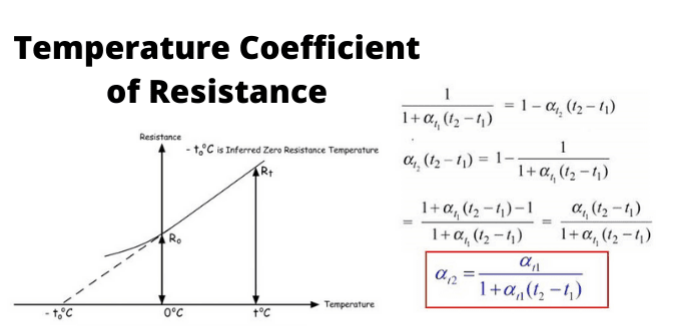
(Fig-7)
Also check-
- NCERT Exemplar Class 11th Physics Solutions
- NCERT Exemplar Class 12th Physics Solutions
- NCERT Exemplar Solutions for All Subjects
NCERT Physics Notes:
Frequently Asked Questions (FAQs)
l=100m, A=0.1mm2, ρ=5×10-8Ω-m
As, R=ρl/A => putting all the above values we get- R=500Ω
Since volume is same in both cases => l'A'=l×A => 3l×A'=l×A =>A' =A/3
R'=ρ×l'/A' = (ρ×3l)/ (A/3) =>R'=9ρl/A = 9R
resistance increases by 9 times
R= ρl/A => R∝1/πr2 , where r is the radius of the cross section of wire.
R∝1/ D2 =>If D doubles, R becomes ¼.
Reactance is the resistance in a circuit or a part of a circuit if the current flowing through it is alternating or time varying.
Impedance is a broader term which encompasses both reactance and resistance. It is often expressed as a complex number and hence considered as a vector.
Also Read
29 Nov'24 09:48 AM
23 Nov'24 01:56 PM
20 Nov'24 10:32 AM
17 Nov'24 10:02 AM
17 Nov'24 09:56 AM
14 Nov'24 07:31 PM
14 Nov'24 05:59 PM
14 Nov'24 01:16 PM
14 Nov'24 12:54 PM

